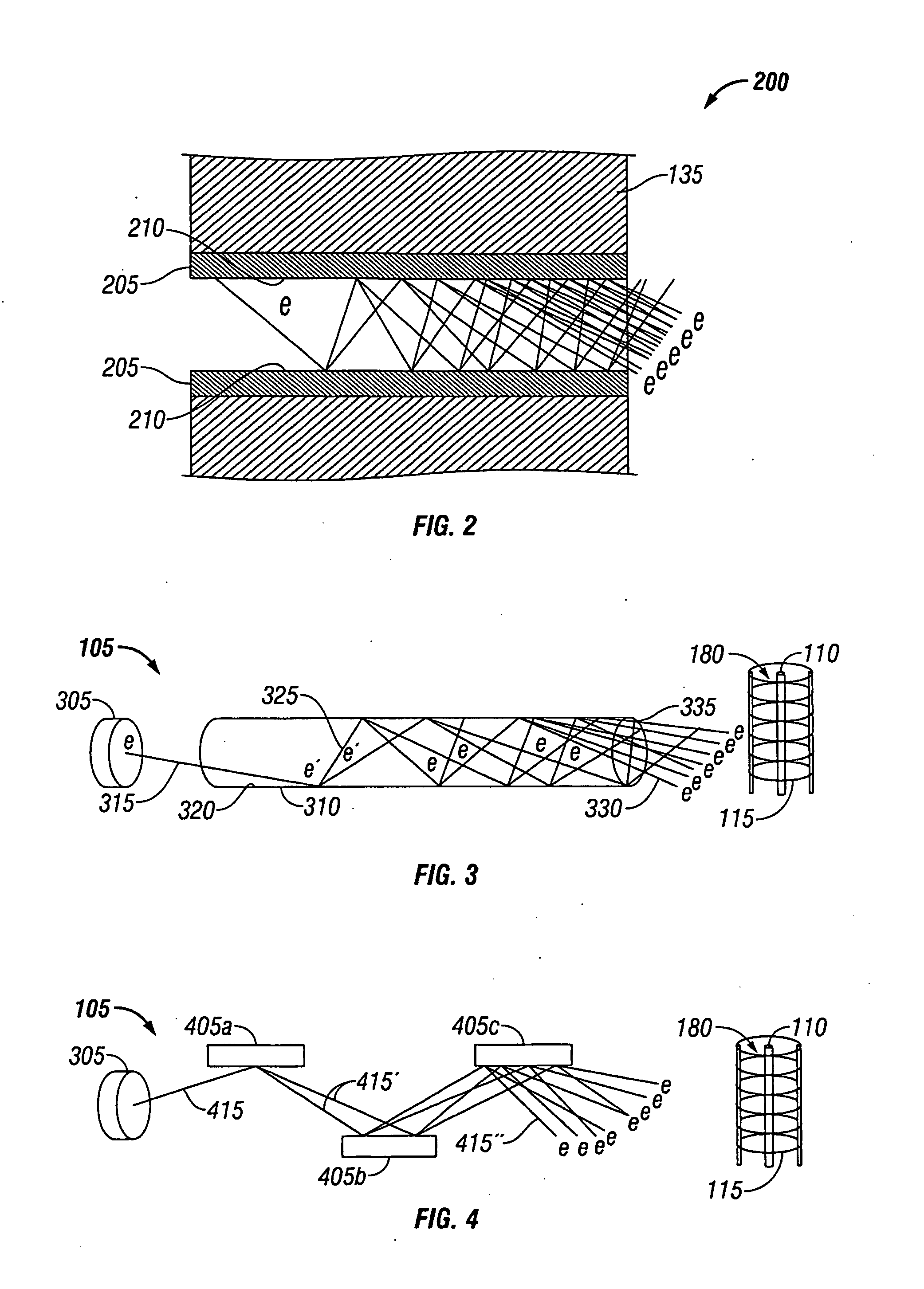Ionization Gauge Having Electron Multiplier Cold Emission Source
a technology of electron multiplier and emission source, which is applied in the direction of vacuum gauge, fluid pressure measurement, instruments, etc., can solve the problems of reducing the emission characteristics of electron sources, gauging and electron sources, and reducing the operational life, so as to reduce the number of electrons generated and reduce the operational life
- Summary
- Abstract
- Description
- Claims
- Application Information
AI Technical Summary
Benefits of technology
Problems solved by technology
Method used
Image
Examples
Embodiment Construction
[0026]A description of preferred embodiments of the invention follows. Generally, as shown in FIG. 1A, an ionization gauge 100 of the present disclosure includes an electron generator array 105, an ion collector electrode 110, and an anode 115. Although the ionization gauge 100 is shown with an anode 115, and collector electrode 110, these components are not needed in all embodiments of the invention as described below and various different ionization gauge configurations are possible. In one embodiment, the ionization gauge 100 is a non-Bayard-Alpert type gauge, or a cold electron emitter ionization gauge, and does not include any hot cathode filament as the electron source for the gauge 100. Instead, ionization gauge 100 is formed in a cold electron emitter gauge configuration and includes a source for generating seed electrons together with a source for multiplying the seed electrons collectively shown as reference numeral 105 as the electron generating array.
[0027]Ionization gau...
PUM
| Property | Measurement | Unit |
|---|---|---|
| temperature | aaaaa | aaaaa |
| size | aaaaa | aaaaa |
| voltage | aaaaa | aaaaa |
Abstract
Description
Claims
Application Information
 Login to View More
Login to View More - R&D
- Intellectual Property
- Life Sciences
- Materials
- Tech Scout
- Unparalleled Data Quality
- Higher Quality Content
- 60% Fewer Hallucinations
Browse by: Latest US Patents, China's latest patents, Technical Efficacy Thesaurus, Application Domain, Technology Topic, Popular Technical Reports.
© 2025 PatSnap. All rights reserved.Legal|Privacy policy|Modern Slavery Act Transparency Statement|Sitemap|About US| Contact US: help@patsnap.com



